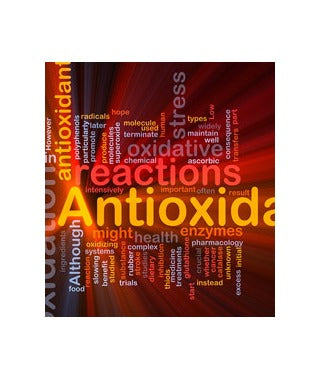This same cellular degradation occurs within the human body when there are not enough antioxidants available to neutralize the free radicals. Because of this, the quantity and quality of the antioxidants an individual takes in as part of their daily diet play a critical role in one's overall health and wellness.
How Do Antioxidants Neutralize Free Radicals?
Before one can understand how antioxidants neutralize free radicals, one needs to know what a free radical is. Stable atoms in the body have eight electrons in their outer shell. When an atom is missing one or more electrons, it becomes unstable, and is then considered a free radical. Because the role of the atom is to bond with other atoms in the body, the free radical gives or takes electrons from healthy, stable atoms, thereby creating additional unstable atoms, or more free radicals. This is the beginning stages of a chain reaction that can cause diseases, advanced aging, and even cancer.
The amazing thing about antioxidants is that their atoms remain stable, even with fewer than eight electrons in their outer shells. Because of this, free radicals can take an electron from an antioxidant atom, and it will become stabilized without the antioxidant atom becoming a free radical. In other words, when a free radical takes an electron from an antioxidant, both atoms remain stable.
Types of Antioxidants
There are thousands of different types of antioxidants in nature, but the ones that are of most importance to human health include astaxanthin, some enzymes such as Superoxide Dismusase, vitamins A, C, and E, beta-carotene, selenium, lycopene, lutein, Coenzyme Q10, phytic acid, flavonoids, and polyphenols. Antioxidants are also separated into two categories – water-soluble (hydrophilic), and fat-soluble (hydrophobic). Water-soluble antioxidants predominantly react with oxidants in the cell cytosol and the blood plasma, while fat-soluble antioxidants protect cell membranes from lipid peroxidation.
Sources of Antioxidants
The body does produce antioxidants to some degree, but it is not capable of producing enough to protect it against the progressive reproduction of free radicals. Because of this, a constant supply of new antioxidants needs to be obtained on a daily basis through the foods we eat. Antioxidants are available in almost all whole and natural foods found in nature, but even with a healthy diet, due to unprecedented levels of pollution, contaminants and chemicals in modern life, we should all supplement each day with good antioxidant supplements. Examples of antioxidant-rich foods include:
• Dark green vegetables (kale, spinach, Brussels sprouts, broccoli, collards, etc.)
• Orange vegetables and fruits (carrots, apricots, peaches, pumpkins, cantaloupe, etc.)
• Red vegetables and fruits (red peppers, tomatoes, watermelon, cranberries, pink grapefruit, papaya, etc.)
• Purple vegetables and fruits (grapes, blueberries, pomegranate, etc.)
• Whole grains, seeds, and oats
• Beans
• Proteins (red meat, chicken, eggs, seafood, pork, etc,)
• Other sources: green tea, coffee, cocoa, garlic, potatoes, and certain spices like cinnamon, cloves, oregano, and turmeric
• Antioxidant supplements (BioAstin® Hawaiian Astaxanthin® and Hawaiian Spirulina Pacifica®)
Antioxidant Benefits
Antioxidants benefit the entire body, inside and out. But, certain antioxidants are more capable of improving specific organs or body systems. For instance, vitamin E is especially beneficial to the skin, while beta-carotene helps protect the eyes and the body from UV-related damage. Antioxidants have the ability to make a significant difference in everyone who takes them. Simply adjusting your diet to include more antioxidant-rich foods, and using antioxidant supplements like BioAstin® and/or Hawaiian Spirulina Pacifica, will have an impact on how you look and feel.
Disclaimer:
The information provided is for educational purposes only and does not constitute medical advice. Always seek the advice of your physician or qualified healthcare provider with any questions or concerns about your health. Check with your doctor before beginning any exercise program. Never disregard or delay seeking medical advice because of something you have heard or read in this article or the internet.

